#russian imperial family
Text

Grand Duchesses Olga, Tatiana, Maria and Anastasia of Russia, 1914.
#grand duchess olga nikolaevna#grand duchess olga of russia#grand duchess olga#grand duchess tatiana nikolaevna#grand duchess tatiana of russia#grand duchess tatiana#grand duchess maria nikolaevna#grand duchess maria of russia#grand duchess maria#grand duchess anastasia nikolaevna#grand duchess anastasia#grand duchess anastasia of russia#otma#imperial russia#imperial family#russian imperial family#colored photography#romanovs#1910s#1914#history colored
183 notes
·
View notes
Text
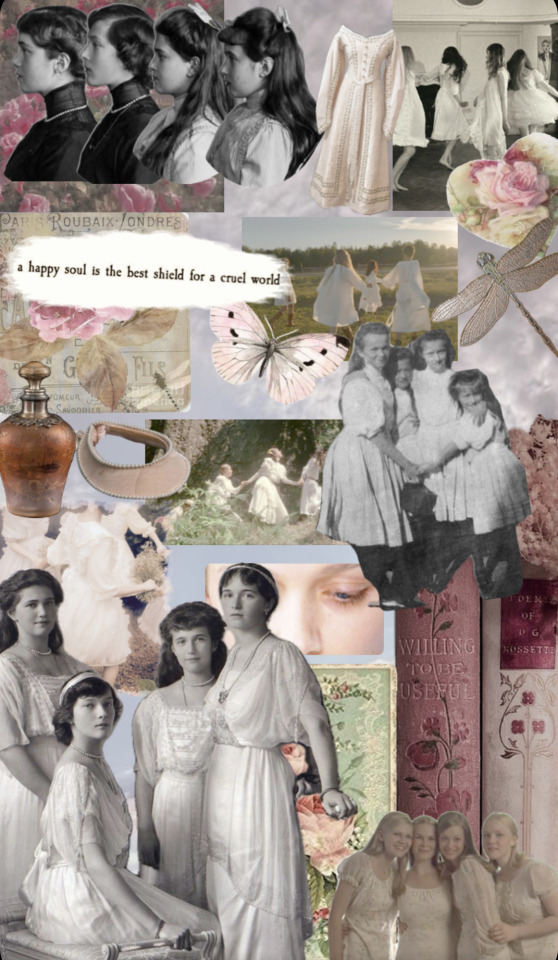
~ ♔ ꧁ OTMA ꧂ ♔ ~
❧ “In the darkness of the mystery which surrounds the fate of these innocent children it is with poignant emotion that I recall them as they appeared, so full of life and joy, in those distant, yet incredibly near, days before the World War and the downfall of Imperial Russia.”
❧ “Olga was perhaps the cleverest of them all, her mind being so quick to grasp ideas, so absorbent of knowledge that she learned almost without application or close study. Her chief characteristics, I should say, were a strong will and a singularly straightfor, ward habit of thought and action.”
❧ “Tatiana was almost a perfect reincarnation of her mother. Taller and slenderer than her sisters, she had the soft, refined features and the gentle, reserved manners of her English ancestry. Kindly and sympathetic of disposition, she displayed towards her younger sisters and her brother such a protecting spirit that they, in fun, nicknamed her "the governess."
❧ “Marie had splendid eyes and rose-red cheeks. She was inclined to be stout and she had rather thick lips which detracted a little from her beauty. Marie had a naturally sweet disposition and a very good mind.”
❧ “Anastasia, a sharp and clever child, was a very monkey for jokes, some of them at times almost too practical for the enjoyment of others. I remember once when the family was in their Polish estate in winter the children were amusing themselves at snowballing. The imp which sometimes seemed to possess Anastasia led her to throw a stone rolled in a snowball straight at her dearly loved sister Tatiana. The missile struck the poor girl fairly in the face with such force that she fell senseless to the ground. The grief and horror of Anastasia lasted for many days and permanently cured her of her worst propensities to practical jokes.”
- Anna Vyrubova (friend and personal confidante of Empress Alexandra Feodorovna)
#💗🤍#OTMA#olga nikolaevna#maria nikolaevna#tatiana nikolaevna#anastasia nikolaevna#romanov#romanovs#my edit#mine#made by me#Romanov edit#russian imperial family#russian history#shuffles#shuffles edit#grand duchesses#grand duchess Olga#grand duchess tatiana#grand duchess maria#grand duchess Anastasia#Anastasia#Anna Vyrubova#diaries and letters#quotes#wallpaper
83 notes
·
View notes
Text

Grand Duchess Tatiana Nikolaevna Romanova in captivity in Tsarskoe Selo, Russia, April 1917. 💔💘
#my bbg <3#💘💘💘#tatiana nikolaevna#romanovs#romanov#russian imperial family#russian empire#imperial russia#tsardom of russia#grand duchess#russia#tsarskoe selo#romanovs in captivity#in captivity#royals in captivity#royal#royals#royal history#history#russian history#1917#1910s#april#spring 1917#april 1917
110 notes
·
View notes
Text


Grand Duchess Alexandra Iosifovna of Russia (née Princess of Saxe-Altenburg) with her granddaughters Princesses Alexandra and Marie “Minnie” of Greece and Denmark, 1880s 🤍✨
The two young girls would both end up marrying back into the Romanov family. Alexandra to Pavel Alexandrovich and Marie to Georgy Mikhailovich.
#so rare!#romanov#romanovs#alexandra iosifovna#grand duchess Alexandra iosifovna#alexandra georgievna#princess Alexandra of Greece and Denmark#maria georgievna#princess marie of Greece and Denmark#Greek Minnie#1880s#russian imperial family#russian history
135 notes
·
View notes
Text

One of my favourite OTMAA pictures, finally in big size and good quality.
Grand Duchesses Olga, Tatiana, Maria and Anastasia Nikolaevna with Tsarevich Alexei in 1906.
source: Hessisches Staatsarchiv
#grand duchess olga#grand duchess tatiana#grand duchess maria#grand duchess marie#grand duchess anastasia#tsarevich alexei#olga nikolaevna#tatiana nikolaevna#Maria nikolaevna#marie nikolaevna#Anastasia nikolaevna#Alexei nikolaevich#OTMA#OTMAA#romanov#Russian imperial family#romanovs#Nicholas II children#Nicholas II#Nicholas II family#1906
172 notes
·
View notes
Text

• Veil with Russian Imperial Family Coat of Arms.
Place of origin: Belgium
Date: 1875–1900
Medium: Cotton, needle lace of a type known as "Point de Gaze".
#fashion history#history of fashion#fashion#19th century fashion#19th century#1900's#veil#russian imperial family#Russia#coat of arms#belgium#point de gaze#1875#1900
1K notes
·
View notes
Text
Fabergé Eggs

Fabergé Eggs, perhaps considered one of the most famous examples of exquisite and luxurious craftsmanship to this day.
Fabergé eggs were originally commissioned by the Russian Imperial family in the late 1800s AD.
Tsar Alexander III (10 March 1845 – 1 November 1894) wanted a richly jeweled egg as an Easter gift for his wife, so Russian jeweler Peter Carl Fabergé (30 May [O.S. 18 May] 1846 – 24 September 1920) got to work and produced very first Fabergé egg in 1885 AD.
And like Easter eggs you may find hidden in your shrubs or gutters, these eggs were also intended to contain a surprise inside.
Initially, the first Fabergé egg was to contain a diamond ring, but after specific instructions given by the Emperor, the egg could be opened to find a ruby pendant instead.
Over the course of the next two decades, ten eggs were produced for the family during Alexander III’s reign, starting a dazzling tradition that his son Nicholas II (18 May [O.S. 6 May] 1868 – 17 July 1918) would carry on for his wife and his mother every Easter.
The popularity of eggs-travagant gifts spread well beyond the Imperial family, and soon, other wealthy families began commissioning their own eggs.
The eggs then began to represent great wealth and luxury that owning a Fabergé egg was considered a status symbol.
And with the skill level and time that it took to craft up just one Fabergé egg – up to one year per egg – it’s no surprise they come with such a high value.
The intricate Fabergé egg-making process began by creating a design for the egg and then the outer shell would start to come to life.
The team of goldsmiths would craft the eggs out of precious metals like gold or silver.
They were each decorated with intricate engravings, filigree work and other decorative elements.
And while his competitors used a standard palette, Fabergé wanted to experiment with more colors.
He created resplendent yellows, mauves, and all shades of greens — coming up with over one hundred and forty new colors.
Just as important as its exterior, the Fabergé egg’s interior was given just as much attention to detail.
A team of jewelers would work on creating a surprise to be hidden inside the bejeweled shell.
These surprises could be anything from miniature portraits of the recipients’ husbands to tiny replicas of famous landmarks.
The artists behind these miniature works of art were some of the best miniature painters, sculptors and engravers of that time who used a variety of material, including enamel, precious stones and even hair to create their work.
Finally, once all of the intricate pieces were complete, they were assembled by a team of skilled craftsmen to create the final product.
The egg was then presented to the recipient and would become a treasured family heirloom for years to come.
Unfortunately, the House of Fabergé was forced to close its doors during the Russian Revolution in 1917.
Fabergé and his family fled Russia.
Many of the Fabergé eggs were sold, lost or smuggled out of Russia during this time, but now, many of them are housed in museums like the famous Fabergé Museum in St. Petersburg, Russia.
However, history came full circle when in 2007, with new ownership and direction, the company announced the reunification of the brand with the Fabergé family.
This new chapter set the stage for a total revitalization of the Fabergé name and philosophy, which are in tune with its original values and spirit.
#House of Fabergé#Fabergé Eggs#Russian Imperial Family#Tsar Alexander III#Peter Carl Fabergé#Easter eggs#Tsar Nicholas II#Russian Revolution (1917)#Fabergé Museum#St. Petersburg#Russia#craftsmanship#family health#status symbol#jewelries#House of Romanov#Easter#Happy Easter#Easter Sunday#Resurrection Sunday#eggs
40 notes
·
View notes
Text






Russia! My astonished child's eyes see huge palaces, beautiful parks, fountains, gardens, amazing gatherings of relatives, military parades, religious services in churches glittering with gold, jewels so breathtaking you can hardly believe they are real [... ] My eyes also see long corridors, vestibules, and halls, of a size beyond compare, opening one into another, and our feet trotting timidly over wide stretches of floors, so unbounded and polished, that we seemed to walk on ice. And everywhere, a very characteristic smell: a mixture of turpentine, Russian leather and cigarette smoke, with a fragrance, unique in its own way, that distinguished the imperial palaces. Imperial is the right word, fantastic, like in fairy tales [...] every superlative is at its place in that Russia of the Tsars, that Russia full of splendour, which today is no more...
- Queen Marie of Romania, “Story of My Life”
#imperial russia#russian imperial family#tsarist russia#maria feodorovna#alexandra feodorovna#marie of romania#nicholas ii#tsar nicholas ii#otma#maria pavlovna the elder#grand duchess vladimir#grand duchess olga#grand duchess tatiana#grand duchess elizabeth feodorovna#grand duchess anastasia#olga romanova#tatiana romanov#maria romanov#anastasia nikolaevna#the romanovs#romanov family#romanov#romanov dynasty
425 notes
·
View notes
Text


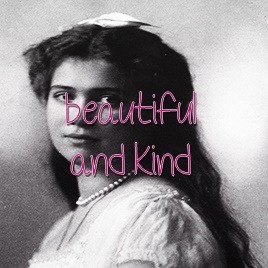

"The Swiss-born Gilliard arrived in Russia in 1904, aged 25, to teach French to Sergei, son of Duke George of Leuchtenberg and Princess Anastasia of Montenegro. George was a nephew of Amelia, second wife of the Brazilian Emperor Pedro I, and a cousin of Tsar Alexander III through his mother, Grand Duchess Maria Nikolaevna. The following year, the Duke appointed him to the imperial family, and Gilliard began to teach also to Olga and Tatiana, the eldest daughters of Nicholas. In 1909, he was dismissed by the Duke and began to devote himself only to the four girls, to whom Alexei joined in 1912. The following year, the Swiss became the tutor of the heir, responsible for everything on his education. This almost daily coexistence led the teacher to have an intimate impression of each one of the pupils. For him, Olga had a sharp mind and was witty and independent. Tatiana, tall and slender, more reserved and less spontaneous than her sister, was the most balanced and strong-willed -- in fact, her sisters called her "Governess" for her habit of giving orders. The beautiful Maria, with large bright eyes, called by her cousins "Maria's saucers," was so kind that her sisters often took advantage of her kindness. Anastasia was terrible. Cheerful, lively, with a sense of humor of her own, she was even stubborn and had a talent for acting."
The last Tsars: a brief untold history of the Romanovs | Paulo Rezzutti
(loose translation)
#facts#grand duchess olga#grand duchess maria#tatiana nikolaevna#grand duchess anastasia#otma#my own#romanovs#russian history#grand duchess#the romanovs#romanov#russian imperial family#imperial russia
73 notes
·
View notes
Text
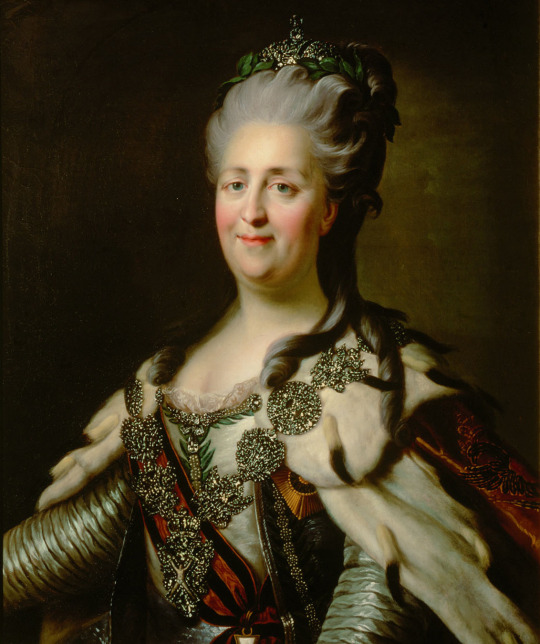



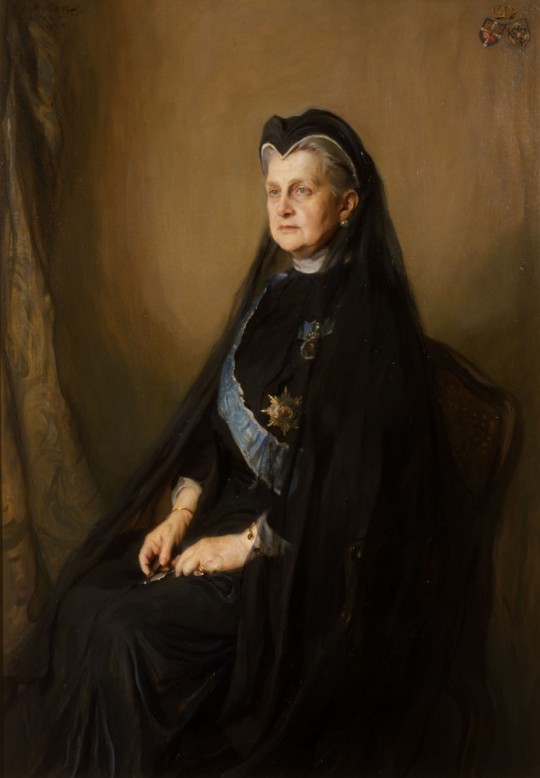

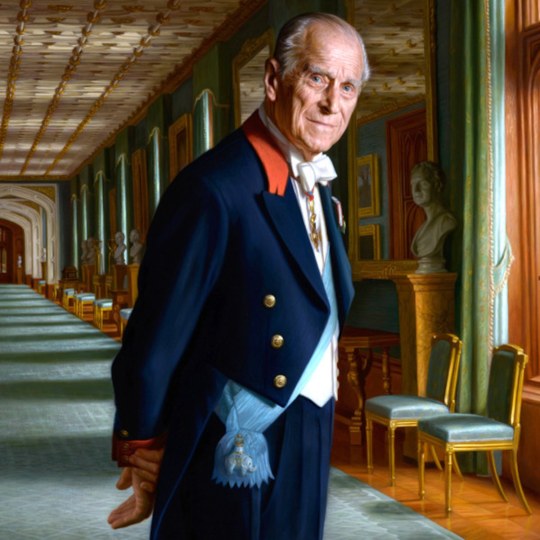


Catherine II the Great, Empress of Russia: 6th great-grandmother of The Prince of Wales.
Catherine II of Russia -> Paul I of Russia -> Nicholas I of Russia -> Grand Duke Konstantin Nikolayevich of Russia -> Olga Constantinovna, Queen consort of Greece -> Prince Andrew of Greece and Denmark -> Prince Philip, The Duke of Edinburgh -> King Charles III of GB -> The Prince of Wales.
#ktd#british royal family#prince william#brf#throwback#king charles lll#prince philip#catherine the great#the great#empress of russia#russian imperial family#tsar Paul I#Paul I#greek royal family#art#art history#history#european royalty
43 notes
·
View notes
Text

“To be honest I blame every ruler of Russia that ruled the country after 1799 for the downfall of the empire and the state of country. They saw what happened in France and instead of learning a lesson they thought Russian people were not brave enough to start the revolution. Bunch of idiots with the crown who could’ve made the country better but didn’t.” - Submitted by Anonymous
22 notes
·
View notes
Text
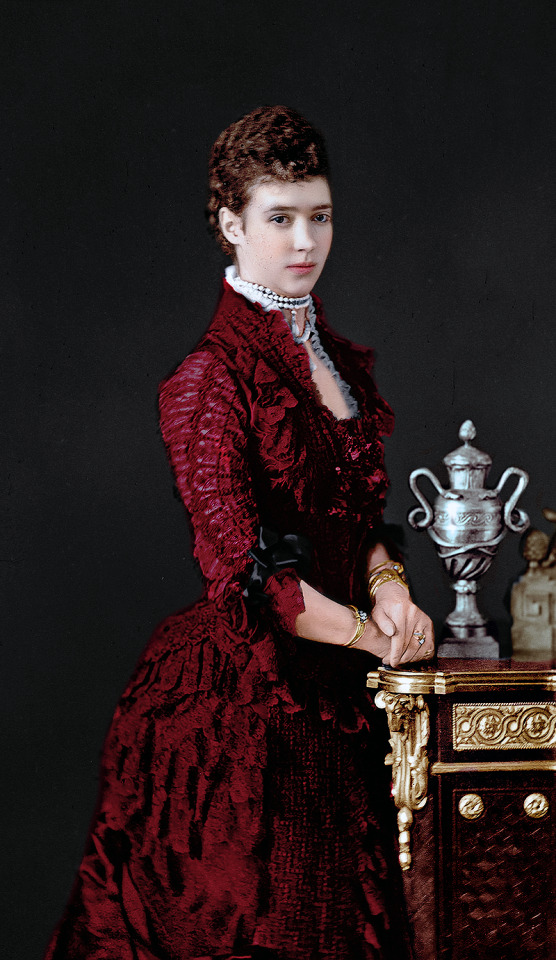
Empress Maria Feodorovna of Russia (Princess Dagmar of Denmark), mother of the last Russian Tsar, early 1880s.
#russian imperial family#imperial russia#imperial family#romanovs#victorian#colored photography#history colored#empress maria feodorovna of russia#empress maria of russia#empress maria feodorovna#princess dagmar of denmark#dagmar of denmark#danish royal family#danish royalty#1880s fashion'#1880s#1882
141 notes
·
View notes
Text

SUPER rare photo of Grand Duchess Anastasia Nikolaevna of Russia playing inside of a hollowed out tree, 1912 😝🤍
Source: Hessian State Archives
#she’s so funny! 🤣#anastasia nikolaevna#grand duchess anastasia#grand duchess Anastasia Nikolaevna#shvybzik#romanovs being funny#1912#romanovs#romanov#russian history#russian imperial family#otma#rare#rares
165 notes
·
View notes
Text


A delightful photo of little Grand Duchesses Olga Nikolaevna and Tatiana Nikolaevna of Russia with their auntie, Grand Duchess Elena Vladimirovna, circa 1898-1899. <3
#romanov#romanovs#olga nikolaevna#tatiana nikolaevna#house of romanov#grand duchess elena vladimirovna#old royal#old royals#old royal photos#royal#royal photos#russian imperial family#russian empire#late 19th century#19th century#the big pair#olga and tatiana#romanov relatives#royal relatives
75 notes
·
View notes
Text
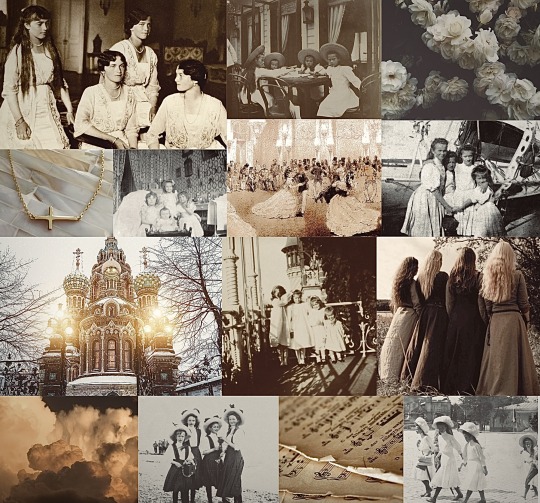
♡ ~ OTMA ~ ♡
~ The Grand Duchesses were fast leaving childhood behind them and blossoming into charming girls; they did not greatly resemble one another, each was a type apart, but all were equally lovely in disposition. I cannot believe that any men so inhuman existed as those who, it is said, shot and stabbed those defenceless creatures in the house of death at Ekaterinburg. Apart from their beauty, their sweetness should have pleaded for them, but, if it is true that they have "passed," then surely no better epitaph could be theirs than the immortal words, "Lovely and pleasant were they in their lives, and in their death they were not divided." ~
~ Lili Dehn
(Inspired by @abigaaal 🤍)
#I’m in love with this#otma#olga nikolaevna#tatiana nikolaevna#maria nikolaevna#anastasia nikolaevna#romanov#romanovs#moodboard#aesthetic#royal aesthetics#OTMA aesthetic#my edit#mine#made by me#imperial russia#russian history#russian imperial family#quotes#lili dehn#romanov family#abigaaal
105 notes
·
View notes
